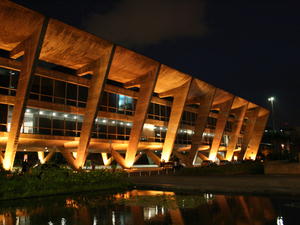 Arte Moderna do Rio de Janeiro Museum - MAP
The Museum of Modern Art of Rio de Janeiro was founded in 1948, and initially purchased European paintings by Pablo Picasso, Ben Nicholson, Wassily Kandinsky, Paul Klee, and Salvador Dali. The museum was present during quite a few artistic movements and launched many of the most important Brazilian artists.
Address: Av. Infante Dom Henrique, 85, Parque do Flamengo. Phone: 921) 2240 4944.
Hours of Operation: Tuesdays t... Arte Moderna do Rio de Janeiro Museum - MAP
The Museum of Modern Art of Rio de Janeiro was founded in 1948, and initially purchased European paintings by Pablo Picasso, Ben Nicholson, Wassily Kandinsky, Paul Klee, and Salvador Dali. The museum was present during quite a few artistic movements and launched many of the most important Brazilian artists.
Address: Av. Infante Dom Henrique, 85, Parque do Flamengo. Phone: 921) 2240 4944.
Hours of Operation: Tuesdays t... |
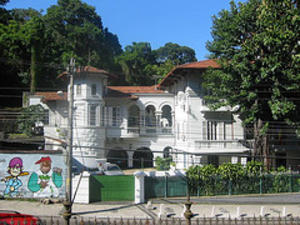 Arte Naïf International Museum - MAP It is in Rio that is exposed the most complete collection of Naïve art world. Just 50 meters from the cable car that leads to the Corcovado, the Cosme Velho, 8,000 works of painters from Brazil and 130 other countries, produced from the fifteenth century, this record spontaneous style and even a bit academic to artistic expression.
The MIAN guard also has the largest screen painted in the genre, with 7m x 4m, depicting, in an origi... Arte Naïf International Museum - MAP It is in Rio that is exposed the most complete collection of Naïve art world. Just 50 meters from the cable car that leads to the Corcovado, the Cosme Velho, 8,000 works of painters from Brazil and 130 other countries, produced from the fifteenth century, this record spontaneous style and even a bit academic to artistic expression.
The MIAN guard also has the largest screen painted in the genre, with 7m x 4m, depicting, in an origi... |
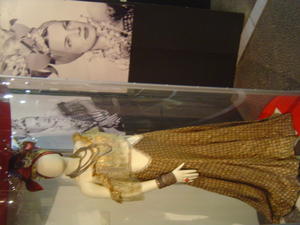 Carmem Miranda Museum - MAP 3 The collection has about three thousand and five hundred pieces, mostly personal belongings of the artist, donated by the family after her death in 1955, through her sister Aurora Miranda and widower David Alfred Sebastian.
It comprises the collection of clothing, with social scenes and costumes, jewelry, platform shoes, turbans and accessories. Some highlight are the skirt used in her debut show on Broadway, the turban used on her m... Carmem Miranda Museum - MAP 3 The collection has about three thousand and five hundred pieces, mostly personal belongings of the artist, donated by the family after her death in 1955, through her sister Aurora Miranda and widower David Alfred Sebastian.
It comprises the collection of clothing, with social scenes and costumes, jewelry, platform shoes, turbans and accessories. Some highlight are the skirt used in her debut show on Broadway, the turban used on her m... |
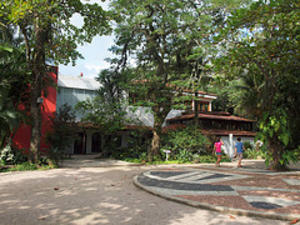 Casa do Pontal - MAP The Casa do Pontal is the largest and most important Museum of Folk Art in Brazil. The collection contains over 8000 sculptures and models made by approximately 200 folk artists from all over Brazil. Include in the collection are works produced throughout the second half of the twentieth century. The entire collection, the building, the gardens and the exhibit itself were conceived and executed by French designer Jacques Van de Beuque, ... Casa do Pontal - MAP The Casa do Pontal is the largest and most important Museum of Folk Art in Brazil. The collection contains over 8000 sculptures and models made by approximately 200 folk artists from all over Brazil. Include in the collection are works produced throughout the second half of the twentieth century. The entire collection, the building, the gardens and the exhibit itself were conceived and executed by French designer Jacques Van de Beuque, ... |
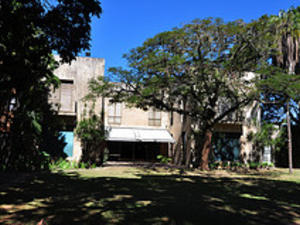 Chácara do Céu Museum - MAP 3 The home of Santa Teresa, known since 1876 as Finca of Heaven, was inherited by Castro Maya in 1936. The present building, designed in 1954 by architect Wladimir Alves de Souza, distinguished by the modernity and architectural solutions for its location, which includes the magnificent gardens and allows 360-degree views over the city and Guanabara Bay.According to the philosophy that guides the Castro Maya Museum programming of the Muse... Chácara do Céu Museum - MAP 3 The home of Santa Teresa, known since 1876 as Finca of Heaven, was inherited by Castro Maya in 1936. The present building, designed in 1954 by architect Wladimir Alves de Souza, distinguished by the modernity and architectural solutions for its location, which includes the magnificent gardens and allows 360-degree views over the city and Guanabara Bay.According to the philosophy that guides the Castro Maya Museum programming of the Muse... |
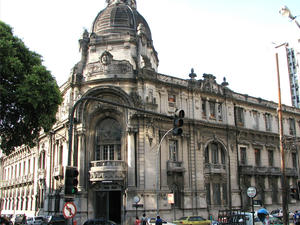 Civil Police Museum - MAP 6 The Museum of the Civil Police of Rio de Janeiro was founded in 1912 under the name Museum of Crime and was intended to collect objects related to investigations and serve as a teaching aid of the Police Academy.Over the years, the museum has collected documents and materials produced by the police work, becoming today the following sections: police institution and its history, uniformed police of the former federal capital, police tech... Civil Police Museum - MAP 6 The Museum of the Civil Police of Rio de Janeiro was founded in 1912 under the name Museum of Crime and was intended to collect objects related to investigations and serve as a teaching aid of the Police Academy.Over the years, the museum has collected documents and materials produced by the police work, becoming today the following sections: police institution and its history, uniformed police of the former federal capital, police tech... |
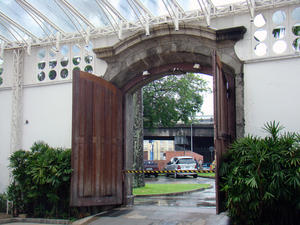 Historico Nacional Museum - MAP The Historic National Museum, created in 1922, is one of the most important museums in the country. Its collection accounts to over 277,490 items, including the greatest numismatics collection of Latin America. The building where the museum stands used to be the Fort Santiago, at the Calabouço edge, one of the strategic points of defense of the city of Rio de Janeiro.
Address: Praça Marechal Âncora, near Pra&cc... Historico Nacional Museum - MAP The Historic National Museum, created in 1922, is one of the most important museums in the country. Its collection accounts to over 277,490 items, including the greatest numismatics collection of Latin America. The building where the museum stands used to be the Fort Santiago, at the Calabouço edge, one of the strategic points of defense of the city of Rio de Janeiro.
Address: Praça Marechal Âncora, near Pra&cc... |
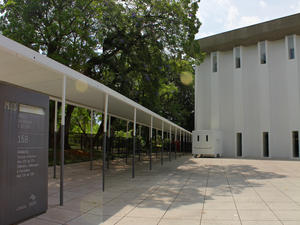 Imagem e do Som Museum - MAP The Museum of Image and Sound of Rio de Janeiro (RJ-MIS) was inaugurated on September 3, 1965, as part of the fourth centenary celebrations of the city of Rio de Janeiro.MIS has launched a gender pioneer museum audiovisual, which would be followed by other Brazilian cities. Besides having been qualified in a documentation center for music and image, was also a leading cultural center in the 60s and 70s of the twentieth century, meeting ... Imagem e do Som Museum - MAP The Museum of Image and Sound of Rio de Janeiro (RJ-MIS) was inaugurated on September 3, 1965, as part of the fourth centenary celebrations of the city of Rio de Janeiro.MIS has launched a gender pioneer museum audiovisual, which would be followed by other Brazilian cities. Besides having been qualified in a documentation center for music and image, was also a leading cultural center in the 60s and 70s of the twentieth century, meeting ... |
| Indio Museum - MAP 7 Indian Museum of Rio de Janeiro
Housed in an elegant 19th-century mansion in a quiet part of Botafogo, the Indian Museum's collection is one of the most important in Latin America, with over 14,000 artifacts and 16,000 books on indigenous people of Brazil. There are also over half a million historical documents on Brazilian Indian tribes, giving a clear picture of how they lived, and their culture. There are no s... |
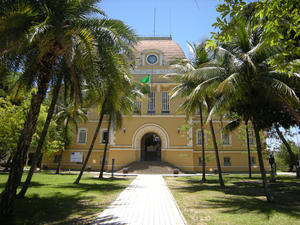 MAST - Museum of Astronomy and Related Sciences - MAP 6
Museu de Astronomia e Ciencias Afins (MAST) is an institution with multiple functions. Established in 1985 in Rio de Janeiro as a government entity, its mission encompasses the history of science and technology in Brazil and the fostering and study of science education and communication.
MAST is a research center under the auspices of the Brazilian Ministry for Science and Technology, carrying out academic research int... MAST - Museum of Astronomy and Related Sciences - MAP 6
Museu de Astronomia e Ciencias Afins (MAST) is an institution with multiple functions. Established in 1985 in Rio de Janeiro as a government entity, its mission encompasses the history of science and technology in Brazil and the fostering and study of science education and communication.
MAST is a research center under the auspices of the Brazilian Ministry for Science and Technology, carrying out academic research int... |
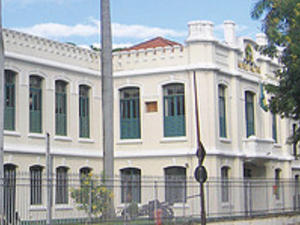 Militar Conde de Linhares Museum - MAP Inaugurated on October 12, 1998, the Military Museum is located in St. Kitts, Rio de Janeiro.Built August 1920 to October 1921, the building of the Conde de Linhares Military Museum was originally occupied by the 1st Machine-Gun Company.Later seviu quartering Quartermaster Company, where officers were trained Quartermaster, who, with the transfer of military school for Realengo Resende, started to make effective the Military Academy of ... Militar Conde de Linhares Museum - MAP Inaugurated on October 12, 1998, the Military Museum is located in St. Kitts, Rio de Janeiro.Built August 1920 to October 1921, the building of the Conde de Linhares Military Museum was originally occupied by the 1st Machine-Gun Company.Later seviu quartering Quartermaster Company, where officers were trained Quartermaster, who, with the transfer of military school for Realengo Resende, started to make effective the Military Academy of ... |
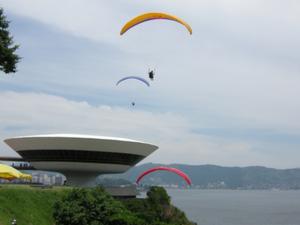 Museum of Contemporary Art - MAC Niterói - MAP Located at 10.9 km from the center of Rio de Janeiro, Niterói is a city with enormous tourist potential. Its beaches, parks, reserves, fortress, historical monuments and the MAC (Museum of Contemporary Art) every year attract hundreds of tourists.
Museum of Contemporary Art - MAC-NiteróiOther NamesMAC NiteróiMuseum of Contemporary Art in NiteroiHistoryIn a nutshell the architect Oscar Niemeyer (1907) sums up his project for the Mu... Museum of Contemporary Art - MAC Niterói - MAP Located at 10.9 km from the center of Rio de Janeiro, Niterói is a city with enormous tourist potential. Its beaches, parks, reserves, fortress, historical monuments and the MAC (Museum of Contemporary Art) every year attract hundreds of tourists.
Museum of Contemporary Art - MAC-NiteróiOther NamesMAC NiteróiMuseum of Contemporary Art in NiteroiHistoryIn a nutshell the architect Oscar Niemeyer (1907) sums up his project for the Mu... |
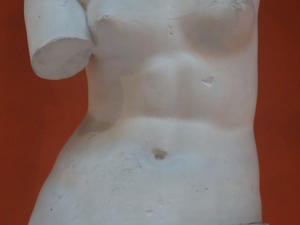 Nacional de Belas Artes Museum - MAP The collection of the National Museum of Fine Arts started with a group of paintings brought to Brazil by Dom Joao VI of Portugal, in 1808, and expanded a few years later with the collection put together by Joachin Lebreton, who commanded the French Artistic Mission, originating the country's most important art gallery. The museum's collection was enriched, of course, with important acquisitions throughout the XIX and XX centurie... Nacional de Belas Artes Museum - MAP The collection of the National Museum of Fine Arts started with a group of paintings brought to Brazil by Dom Joao VI of Portugal, in 1808, and expanded a few years later with the collection put together by Joachin Lebreton, who commanded the French Artistic Mission, originating the country's most important art gallery. The museum's collection was enriched, of course, with important acquisitions throughout the XIX and XX centurie... |
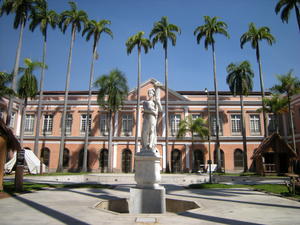 National Archives - MAP Coordination of Cartographic and Audiovisual Documents - CODAC The collection presents the mapping world geography of the eighteenth and nineteenth centuries and Brazil in the nineteenth and twentieth centuries through maps, plans, maps and nautical. Referring to Brazil, we are planning projects, provinces, states and cities, the infrastructure is marked by the railroads, telegraph lines, ports, dams, settlements, projects canalization ... National Archives - MAP Coordination of Cartographic and Audiovisual Documents - CODAC The collection presents the mapping world geography of the eighteenth and nineteenth centuries and Brazil in the nineteenth and twentieth centuries through maps, plans, maps and nautical. Referring to Brazil, we are planning projects, provinces, states and cities, the infrastructure is marked by the railroads, telegraph lines, ports, dams, settlements, projects canalization ... |
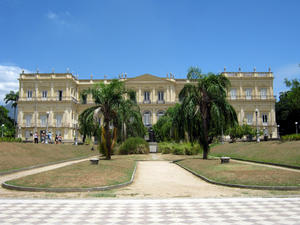 National Museu UFRJ - MAP 3 The Museu Nacional do Brasil located in Quinta da Boa Vista is under the Ministry of Education. It is the oldest scientific institution in Brazil and the largest museum of natural history and anthropology of Latin America. Created by D. John VI, on 6 June 1818 and initially based at Campo de Sant'Anna, served to meet the interests of promoting economic and cultural progress in the country.
Originally called the Royal Museum, was inco... National Museu UFRJ - MAP 3 The Museu Nacional do Brasil located in Quinta da Boa Vista is under the Ministry of Education. It is the oldest scientific institution in Brazil and the largest museum of natural history and anthropology of Latin America. Created by D. John VI, on 6 June 1818 and initially based at Campo de Sant'Anna, served to meet the interests of promoting economic and cultural progress in the country.
Originally called the Royal Museum, was inco... |
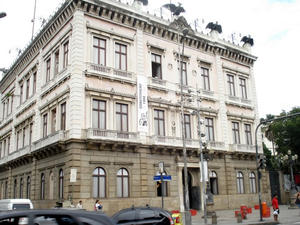 Palácio do Catete - Republic Museum - MAP Catete Palace, the shelter of our Republic Museum.Republican seat of power between the years 1897 and 1960, the Catete Palace has neoclassical architecture with façade of granite and marble portals framed by pink and white marble. For now there is nothing more than 18 Presidents and to some of the most important events in the history of the country, as the decisions of Brazil's participation in two world wars and the suicide of Preside... Palácio do Catete - Republic Museum - MAP Catete Palace, the shelter of our Republic Museum.Republican seat of power between the years 1897 and 1960, the Catete Palace has neoclassical architecture with façade of granite and marble portals framed by pink and white marble. For now there is nothing more than 18 Presidents and to some of the most important events in the history of the country, as the decisions of Brazil's participation in two world wars and the suicide of Preside... |
| Primeiro Reinaldo Museum - MAP Opened on March 12, 1979, the Museum of the First Empire is located in the district of St. Christopher, installed in the palace that belonged to the Marquise of Santos, who lived there from 1826 to 1829.Protected by the Institute of National Artistic Heritage - Iphan in 1938, the Solar da Marquesa de Santos is the largest museum collection and archive, in its beautiful decorated rooms, memories of the colonial period.Permanent Collectio... |
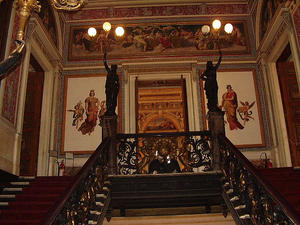 Republica Museum - MAP 6
The Museu da República (Museum of the Republic) occupies the former Nova Friburgo Palace, also known as Palácio do Catete (Catete Palace), was the heart of the Executive Power in Brasil for 63 years. The museum opened on November 15, 1960, after Brasilia became the country new capital.
Republican seat of power between the years 1897 and 1960, the Palácio do Catete has neoclassical architecture... Republica Museum - MAP 6
The Museu da República (Museum of the Republic) occupies the former Nova Friburgo Palace, also known as Palácio do Catete (Catete Palace), was the heart of the Executive Power in Brasil for 63 years. The museum opened on November 15, 1960, after Brasilia became the country new capital.
Republican seat of power between the years 1897 and 1960, the Palácio do Catete has neoclassical architecture... |
 Arte Moderna do Rio de Janeiro Museum - MAP
The Museum of Modern Art of Rio de Janeiro was founded in 1948, and initially purchased European paintings by Pablo Picasso, Ben Nicholson, Wassily Kandinsky, Paul Klee, and Salvador Dali. The museum was present during quite a few artistic movements and launched many of the most important Brazilian artists.
Address: Av. Infante Dom Henrique, 85, Parque do Flamengo. Phone: 921) 2240 4944.
Hours of Operation: Tuesdays t...
Arte Moderna do Rio de Janeiro Museum - MAP
The Museum of Modern Art of Rio de Janeiro was founded in 1948, and initially purchased European paintings by Pablo Picasso, Ben Nicholson, Wassily Kandinsky, Paul Klee, and Salvador Dali. The museum was present during quite a few artistic movements and launched many of the most important Brazilian artists.
Address: Av. Infante Dom Henrique, 85, Parque do Flamengo. Phone: 921) 2240 4944.
Hours of Operation: Tuesdays t... Arte Naïf International Museum - MAP It is in Rio that is exposed the most complete collection of Naïve art world. Just 50 meters from the cable car that leads to the Corcovado, the Cosme Velho, 8,000 works of painters from Brazil and 130 other countries, produced from the fifteenth century, this record spontaneous style and even a bit academic to artistic expression.
The MIAN guard also has the largest screen painted in the genre, with 7m x 4m, depicting, in an origi...
Arte Naïf International Museum - MAP It is in Rio that is exposed the most complete collection of Naïve art world. Just 50 meters from the cable car that leads to the Corcovado, the Cosme Velho, 8,000 works of painters from Brazil and 130 other countries, produced from the fifteenth century, this record spontaneous style and even a bit academic to artistic expression.
The MIAN guard also has the largest screen painted in the genre, with 7m x 4m, depicting, in an origi... Carmem Miranda Museum - MAP 3 The collection has about three thousand and five hundred pieces, mostly personal belongings of the artist, donated by the family after her death in 1955, through her sister Aurora Miranda and widower David Alfred Sebastian.
It comprises the collection of clothing, with social scenes and costumes, jewelry, platform shoes, turbans and accessories. Some highlight are the skirt used in her debut show on Broadway, the turban used on her m...
Carmem Miranda Museum - MAP 3 The collection has about three thousand and five hundred pieces, mostly personal belongings of the artist, donated by the family after her death in 1955, through her sister Aurora Miranda and widower David Alfred Sebastian.
It comprises the collection of clothing, with social scenes and costumes, jewelry, platform shoes, turbans and accessories. Some highlight are the skirt used in her debut show on Broadway, the turban used on her m... Casa do Pontal - MAP The Casa do Pontal is the largest and most important Museum of Folk Art in Brazil. The collection contains over 8000 sculptures and models made by approximately 200 folk artists from all over Brazil. Include in the collection are works produced throughout the second half of the twentieth century. The entire collection, the building, the gardens and the exhibit itself were conceived and executed by French designer Jacques Van de Beuque, ...
Casa do Pontal - MAP The Casa do Pontal is the largest and most important Museum of Folk Art in Brazil. The collection contains over 8000 sculptures and models made by approximately 200 folk artists from all over Brazil. Include in the collection are works produced throughout the second half of the twentieth century. The entire collection, the building, the gardens and the exhibit itself were conceived and executed by French designer Jacques Van de Beuque, ... Chácara do Céu Museum - MAP 3 The home of Santa Teresa, known since 1876 as Finca of Heaven, was inherited by Castro Maya in 1936. The present building, designed in 1954 by architect Wladimir Alves de Souza, distinguished by the modernity and architectural solutions for its location, which includes the magnificent gardens and allows 360-degree views over the city and Guanabara Bay.According to the philosophy that guides the Castro Maya Museum programming of the Muse...
Chácara do Céu Museum - MAP 3 The home of Santa Teresa, known since 1876 as Finca of Heaven, was inherited by Castro Maya in 1936. The present building, designed in 1954 by architect Wladimir Alves de Souza, distinguished by the modernity and architectural solutions for its location, which includes the magnificent gardens and allows 360-degree views over the city and Guanabara Bay.According to the philosophy that guides the Castro Maya Museum programming of the Muse... Civil Police Museum - MAP 6 The Museum of the Civil Police of Rio de Janeiro was founded in 1912 under the name Museum of Crime and was intended to collect objects related to investigations and serve as a teaching aid of the Police Academy.Over the years, the museum has collected documents and materials produced by the police work, becoming today the following sections: police institution and its history, uniformed police of the former federal capital, police tech...
Civil Police Museum - MAP 6 The Museum of the Civil Police of Rio de Janeiro was founded in 1912 under the name Museum of Crime and was intended to collect objects related to investigations and serve as a teaching aid of the Police Academy.Over the years, the museum has collected documents and materials produced by the police work, becoming today the following sections: police institution and its history, uniformed police of the former federal capital, police tech... Imagem e do Som Museum - MAP The Museum of Image and Sound of Rio de Janeiro (RJ-MIS) was inaugurated on September 3, 1965, as part of the fourth centenary celebrations of the city of Rio de Janeiro.MIS has launched a gender pioneer museum audiovisual, which would be followed by other Brazilian cities. Besides having been qualified in a documentation center for music and image, was also a leading cultural center in the 60s and 70s of the twentieth century, meeting ...
Imagem e do Som Museum - MAP The Museum of Image and Sound of Rio de Janeiro (RJ-MIS) was inaugurated on September 3, 1965, as part of the fourth centenary celebrations of the city of Rio de Janeiro.MIS has launched a gender pioneer museum audiovisual, which would be followed by other Brazilian cities. Besides having been qualified in a documentation center for music and image, was also a leading cultural center in the 60s and 70s of the twentieth century, meeting ... MAST - Museum of Astronomy and Related Sciences - MAP 6
Museu de Astronomia e Ciencias Afins (MAST) is an institution with multiple functions. Established in 1985 in Rio de Janeiro as a government entity, its mission encompasses the history of science and technology in Brazil and the fostering and study of science education and communication.
MAST is a research center under the auspices of the Brazilian Ministry for Science and Technology, carrying out academic research int...
MAST - Museum of Astronomy and Related Sciences - MAP 6
Museu de Astronomia e Ciencias Afins (MAST) is an institution with multiple functions. Established in 1985 in Rio de Janeiro as a government entity, its mission encompasses the history of science and technology in Brazil and the fostering and study of science education and communication.
MAST is a research center under the auspices of the Brazilian Ministry for Science and Technology, carrying out academic research int... Militar Conde de Linhares Museum - MAP Inaugurated on October 12, 1998, the Military Museum is located in St. Kitts, Rio de Janeiro.Built August 1920 to October 1921, the building of the Conde de Linhares Military Museum was originally occupied by the 1st Machine-Gun Company.Later seviu quartering Quartermaster Company, where officers were trained Quartermaster, who, with the transfer of military school for Realengo Resende, started to make effective the Military Academy of ...
Militar Conde de Linhares Museum - MAP Inaugurated on October 12, 1998, the Military Museum is located in St. Kitts, Rio de Janeiro.Built August 1920 to October 1921, the building of the Conde de Linhares Military Museum was originally occupied by the 1st Machine-Gun Company.Later seviu quartering Quartermaster Company, where officers were trained Quartermaster, who, with the transfer of military school for Realengo Resende, started to make effective the Military Academy of ... Museum of Contemporary Art - MAC Niterói - MAP Located at 10.9 km from the center of Rio de Janeiro, Niterói is a city with enormous tourist potential. Its beaches, parks, reserves, fortress, historical monuments and the MAC (Museum of Contemporary Art) every year attract hundreds of tourists.
Museum of Contemporary Art - MAC-NiteróiOther NamesMAC NiteróiMuseum of Contemporary Art in NiteroiHistoryIn a nutshell the architect Oscar Niemeyer (1907) sums up his project for the Mu...
Museum of Contemporary Art - MAC Niterói - MAP Located at 10.9 km from the center of Rio de Janeiro, Niterói is a city with enormous tourist potential. Its beaches, parks, reserves, fortress, historical monuments and the MAC (Museum of Contemporary Art) every year attract hundreds of tourists.
Museum of Contemporary Art - MAC-NiteróiOther NamesMAC NiteróiMuseum of Contemporary Art in NiteroiHistoryIn a nutshell the architect Oscar Niemeyer (1907) sums up his project for the Mu... Nacional de Belas Artes Museum - MAP The collection of the National Museum of Fine Arts started with a group of paintings brought to Brazil by Dom Joao VI of Portugal, in 1808, and expanded a few years later with the collection put together by Joachin Lebreton, who commanded the French Artistic Mission, originating the country's most important art gallery. The museum's collection was enriched, of course, with important acquisitions throughout the XIX and XX centurie...
Nacional de Belas Artes Museum - MAP The collection of the National Museum of Fine Arts started with a group of paintings brought to Brazil by Dom Joao VI of Portugal, in 1808, and expanded a few years later with the collection put together by Joachin Lebreton, who commanded the French Artistic Mission, originating the country's most important art gallery. The museum's collection was enriched, of course, with important acquisitions throughout the XIX and XX centurie... National Archives - MAP Coordination of Cartographic and Audiovisual Documents - CODAC The collection presents the mapping world geography of the eighteenth and nineteenth centuries and Brazil in the nineteenth and twentieth centuries through maps, plans, maps and nautical. Referring to Brazil, we are planning projects, provinces, states and cities, the infrastructure is marked by the railroads, telegraph lines, ports, dams, settlements, projects canalization ...
National Archives - MAP Coordination of Cartographic and Audiovisual Documents - CODAC The collection presents the mapping world geography of the eighteenth and nineteenth centuries and Brazil in the nineteenth and twentieth centuries through maps, plans, maps and nautical. Referring to Brazil, we are planning projects, provinces, states and cities, the infrastructure is marked by the railroads, telegraph lines, ports, dams, settlements, projects canalization ... National Museu UFRJ - MAP 3 The Museu Nacional do Brasil located in Quinta da Boa Vista is under the Ministry of Education. It is the oldest scientific institution in Brazil and the largest museum of natural history and anthropology of Latin America. Created by D. John VI, on 6 June 1818 and initially based at Campo de Sant'Anna, served to meet the interests of promoting economic and cultural progress in the country.
Originally called the Royal Museum, was inco...
National Museu UFRJ - MAP 3 The Museu Nacional do Brasil located in Quinta da Boa Vista is under the Ministry of Education. It is the oldest scientific institution in Brazil and the largest museum of natural history and anthropology of Latin America. Created by D. John VI, on 6 June 1818 and initially based at Campo de Sant'Anna, served to meet the interests of promoting economic and cultural progress in the country.
Originally called the Royal Museum, was inco... Palácio do Catete - Republic Museum - MAP Catete Palace, the shelter of our Republic Museum.Republican seat of power between the years 1897 and 1960, the Catete Palace has neoclassical architecture with façade of granite and marble portals framed by pink and white marble. For now there is nothing more than 18 Presidents and to some of the most important events in the history of the country, as the decisions of Brazil's participation in two world wars and the suicide of Preside...
Palácio do Catete - Republic Museum - MAP Catete Palace, the shelter of our Republic Museum.Republican seat of power between the years 1897 and 1960, the Catete Palace has neoclassical architecture with façade of granite and marble portals framed by pink and white marble. For now there is nothing more than 18 Presidents and to some of the most important events in the history of the country, as the decisions of Brazil's participation in two world wars and the suicide of Preside... Republica Museum - MAP 6
The Museu da República (Museum of the Republic) occupies the former Nova Friburgo Palace, also known as Palácio do Catete (Catete Palace), was the heart of the Executive Power in Brasil for 63 years. The museum opened on November 15, 1960, after Brasilia became the country new capital.
Republican seat of power between the years 1897 and 1960, the Palácio do Catete has neoclassical architecture...
Republica Museum - MAP 6
The Museu da República (Museum of the Republic) occupies the former Nova Friburgo Palace, also known as Palácio do Catete (Catete Palace), was the heart of the Executive Power in Brasil for 63 years. The museum opened on November 15, 1960, after Brasilia became the country new capital.
Republican seat of power between the years 1897 and 1960, the Palácio do Catete has neoclassical architecture...